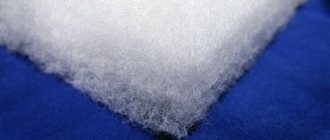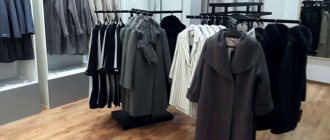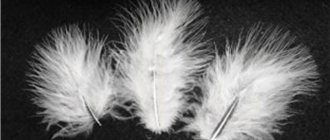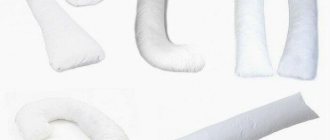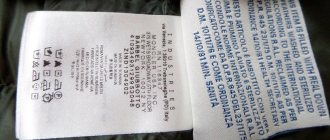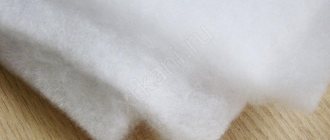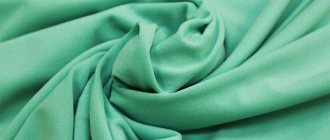| Place | Name | Characteristics in the rating |
| Top 8 best fillings for winter jackets |
| 1 | Pooh | Best quality |
| 2 | Thinsulate | Best warming properties |
| 3 | Shelter | Durable and harmless |
| 4 | Wool | Practicality and warmth |
| 5 | Termofin | Excellent wear resistance |
| 6 | Isosoft | Does not deform |
| 7 | Sintepon | The easiest to care for |
| 8 | Holofiber | Affordable price |
Price
Before you can wear, wash, and stay warm with a jacket, you first need to buy the jacket. Consumers are often put off by the price of a product with feather and down filling. Of course, down feathers are more expensive because they require more painstaking processing.
However, the cost of synthetic insulation varies. A jacket filled with special balls called artificial swan down will cost a pretty penny. You can distinguish such a product yourself: “swan balls” feel like elastic peas to the touch.
Yulia Sevostyanova, head of the testing laboratory of the Silk Research Center:
Comparing synthetic filler and down filler is like comparing buckwheat porridge and rice porridge. Both insulation materials are good in their own way and have different origins. Down is more expensive and has more elastic properties than synthetic filler. On the other hand, synthetic filler is unpretentious in terms of care - it can be washed and safely dry-cleaned. As for the main purpose of the jacket - to keep warm, then everything depends on the quality of the product as a whole, and not on the specific filler.
Detailed results of the Roskachestvo study of jackets with down and feather filling are available, and those with artificial filling are available.
Hollofiber or synthetic winterizer: which material is warmer?
When buying winter clothes, you should pay attention not only to the style, fabric and finishing of the product, but also to the insulating material, since it largely determines how comfortable, comfortable and warm the jacket or coat will be. Hollofiber or padding polyester: which will be warmer, more practical and more durable? To find out the answer to this question, you need to carefully study all the properties of these materials.
Synthetic winterizer is a lightweight, elastic, voluminous non-woven synthetic insulation material that has been successfully replacing natural materials such as down, feathers and sheep’s wool for several decades.
The technological process for producing padding polyester is based on bonding polyester fibers into a homogeneous fabric in one of three ways:
- Adhesive, using a latex composition.
- Needle-punched - on machines with special equipment.
- Thermal - under the influence of high temperatures.
The latter method is considered the most effective, since the canvas becomes especially durable and dimensional stable. The insulation obtained as a result of thermal soldering is called Eurosynthepon.
The density scale of padding polyester fabrics is quite large - from 40 to 1500 g/cm3. To insulate various products, they are laid out in layers and fastened together.
Interesting fact! Sometimes natural wool is added to synthetic fibers to increase heat-saving characteristics. The resulting material is called sherstepon and is used to sew blankets and mattresses for strollers and cribs for small children.
Sintepon: pros and cons
Synthetic winterizer is a popular insulation material because it has a number of positive properties:
- light weight compared to wool insulation and batting;
- resistance to various deformations;
- high thermal insulation qualities;
- low hygroscopicity;
- low melting point.
The undoubted advantage of padding polyester is the low cost of production, which makes all products with it affordable in price.
However, padding polyester also has negative qualities, and very significant ones:
- the use of adhesive compositions makes the insulation unsafe for the body, since, when destroyed during washing, glue particles can cause allergic reactions;
- during the washing process, the synthetic fibers form clumps, which are very difficult to “fluff”;
- the material does not allow air to pass through well, so synthetic coats and jackets are not suitable for particularly low temperatures - you can freeze in them;
- padding polyester fibers are able to “migrate” and seep through the outer fabric, giving clothes an unkempt and unpresentable appearance;
- Very often, second-grade raw materials are used for the production of synthetic winterizer, which significantly reduces both the quality and service life of the products.
However, synthetic winterizer still remains one of the most popular insulating materials used in many industries.
Scope of application
Due to its operational and heat-saving characteristics, as well as the optimal price-quality ratio, synthetic winterizer is used:
- in the production of upholstered furniture as a layer in sofas, armchairs, poufs and other products;
- for sewing sleeping bags, tents and various camping equipment;
- in the footwear industry for insulation of quilted winter boots;
- when sewing outerwear - children's and adult jackets, coats, overalls;
- as a filler for blankets, mattresses and pillows;
- in construction – for insulating individual elements of buildings.
Interesting! Recently, synthetic winterizer has begun to be used as a filter material when installing air systems, as well as in household air conditioners. Its fibers successfully trap even the smallest particles of dirt, completely purifying the air.
Product care
Compliance with the rules of care for things insulated with padding polyester will significantly extend their service life and maintain their original appearance.
- It is best to wash by hand using liquid detergents that do not contain chlorine.
- You cannot soak clothes or bedding with padding polyester.
- When washing in a machine, you need to select a mode for delicate laundry. The water temperature should not exceed 400C.
- Synthetic winterizers cannot be twisted. Clothes are hung loosely on hangers and allowed to drain.
- During machine washing, the spin and dry modes must be turned off.
- If clothes need ironing, then this must be done carefully: set the iron regulator to minimum heat and iron through a cotton cloth.
It is important to know! To prevent the synthetic padding filler from getting loose during washing, it is recommended to place two or three tennis balls in the drum of the washing machine along with the clothes.
Recommendations for choosing a down jacket
Jackets filled with down are warm and light.
Here are some tips for those who decide to buy a jacket or coat with natural filling.
- If the down jacket is really filled with down, then the English word down will be written on the label. Since clothing made from fluff alone is extremely rare, the word feather will be present nearby, translated as “feather”. Next you need to pay attention to the ratio of these components. A truly warm jacket made of 80% down and 20% feather. For an average winter, when the air temperature rarely drops below -10°C, a down jacket with a ratio of 60/40 or 50/50 is suitable.
- The designations polyester, cotton or wool on the product tag indicate that cotton wool, wool batting or padding polyester was used as filler.
- When choosing a down jacket, you need to make sure that the material is stitched in even blocks of small sizes. If the cells are too large, the fluff will quickly fall off and form lumps, which will spoil the appearance of the product and reduce protection from the cold.
- They produce both single-layer and double-layer down jackets. For a city dweller who does not have to spend a long time on the street, a single-layer model is sufficient, although two-layer ones are much warmer.
- High-quality filler quickly restores its original state after deformation. This property of the product can be easily checked by squeezing a part of the jacket with your hand and abruptly releasing it. In addition, on the tag the manufacturer usually indicates the compression ratio, which is designated by the letters FP. Quality clothing corresponds to an indicator of 550 or more.
- The properties of the filler directly depend on how well the down and feathers are processed. A conscientious manufacturer does not hide information about processing. If the label says DIN EN 12934, it means that the down and feathers have been disinfected, washed and dried properly.
- When choosing a jacket with natural filling, you need to carefully inspect the lining and make sure that the feathers do not pierce the fabric. Otherwise, wearing such clothes will be uncomfortable.
Each manufacturer that respects the reputation of their company supplies their products with a small transparent bag with filler samples and detailed care instructions in the form of a small book.
Pooh
Jackets with down are called "down jackets". For filler, goose or duck down is used, and eider down is considered the warmest, but also most expensive. Natural material provides warmth, eliminates the possibility of overheating and quickly restores volume after mechanical compression. Such properties are explained by the structure of the fluff, which consists of individual fluffs that repel or easily enter each other.
To prevent the fluff from rolling into clumps, feathers are added to it.
Down jackets for girls
Please note that we are talking about high-quality down; cheap fakes do not have the described properties.
Down jackets for boys
And in Finland, the production of down jackets for children using natural down is not encouraged. Due to the dangerous effects of fluff on children's health. Allegedly, through micro holes, moisture can get inside and wet the insulation, creating an environment for the proliferation of harmful microbes and microorganisms, which in turn can cause allergies or provoke an asthma attack.
Comparison
The most important fact that determines the choice is the price of the product. Sintepon is somewhat cheaper, but worse in quality, and down is more expensive, but several times better in properties.
As a rule, parents determine their capabilities, the season for which the jacket is purchased (winter or autumn) and make the final choice!
The debate about which jackets are better - padding polyester or down - has been going on, perhaps, for as long as these very jackets have existed. The older generation prefers down: it is environmentally friendly, warm - you walk as if wrapped in a feather bed. The younger generation claims that the future belongs to synthetics: insulation made from polymer fibers is lightweight, washes well, and does not harbor pests. Roskachestvo called on experts to act as seconds in the battle of two extremes.
